It is 1805 and Napoleon Bonaparte has subdued Prussia and struck a deal which allied France with Russia. The French were now the dominant military land power in Europe while the British Royal Navy controlled the seas. Spain was then an ally of Napoleon’s First French Empire and to combat the strength of the British navy Spain’s formidable navy had been incorporated with the French navy to form the Combined Fleet under the command of French Vice Admiral Pierre-Charles Villeneuve. Bonaparte had an ambitious plan to invade England, and the fleet was a part of his strategy to gain control of the English Channel and allow his Grande Armée unhindered access to the south coast of England. On the 18th October 1805, the Combined Fleet left Cádiz bound for England, where they had been instructed to clear British ships from the English Channel.
 Nat Maritime Museum.jpg)
The battle of Trafalgar, J. M. W. Turner, National Maritime Museum Greenwich.
The Royal Navy, commanded by Admiral Nelson, was well aware of the disposition of Bonaprte’s fleet and sailed to meet them off the Cabo de Trafalgar. The battle that followed resulted in the loss or capture of 22 of the coalition ships, including the largest fighting ship in either fleet, the Spanish flagship Santisima Trinidad. The British fleet lost none of their ships, but their victorious Admiral Nelson had been killed. After the battle, Bonaparte was incensed that the Portuguese were still trading with, and aiding, the British. Napoleon had his agents drew up a secret treaty with the unpopular Prime Minister of Spain Manuel de Godoy. Now known as the Treaty of Fontainebleau, it divided Portugal up between Spain and France. Godoy would become the ruler of the Algarve, and all that he had to do to gain this prize was allow Bonaparte’s troops to march through Spain and invade Portugal. Prince John of Braganza, was ruling Portugal as regent for his insane mother Queen Maria I, and it was he who received a visit on 19 July 1807 from Napoleon’s Foreign Minister, Talleyrand. He was ordered to declare war on England, arrest and imprison all British traders and confiscate their ships and goods. The Prince Regent refused.
The emperor began to build up his forces at Bayonne under the command of Jean-Andoche Junot, who had served as ambassador to Portugal in 1805. A second demand to declare war on England was sent to Portugal, and again Prince John refused to comply. This was all the excuse Bonaparte needed, and on 12 October, Junot led his army across the Bidasoa River at Irun to begin the long march to Portugal. Just under 7 weeks later, on 30 November, Bonaparte’s troops entered Lisbon to find that the day before they arrived, the Prince Regent, along with all the nobility and rich traders of Portugal, had loaded a fleet of 20 ships with their treasure and possessions and sailed for their colony in Brazil. They were escorted on their voyage by15 warships, some of them British.
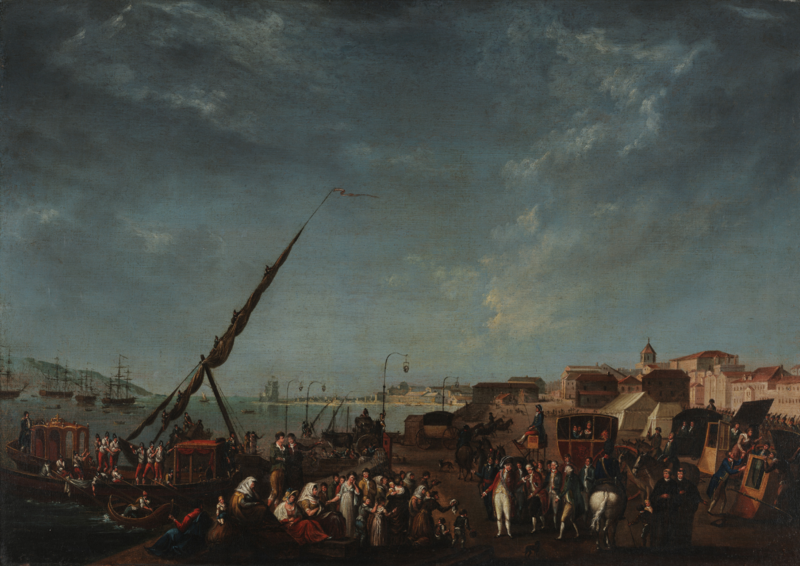
Prince John and the nobles of Portugal leaving for Brazil. Painting : Nicolas-Louis-Albert Delerive, Wiki.
Junot now had a difficult situation on his hands. The Portuguese army was still in place, but with nobody to lead it. All the loot that he had hoped to pay his troops with had gone to Brazil and the Portuguese people were not happy that they were under the yoke of French invaders. He immediately formed a Portuguese Legion from the Portuguese army, absorbed them into the French army, and sent them to northern Germany to perform garrison duty. He confiscated all the land and properties of the absent nobility and raised the taxes throughout Portugal. It was not long before he had to enforce payment of the crippling taxes with executions. Any incident could spark off a revolt that could make his rule impossible. That incident did not to come from Portugal, but Spain.
After the battle of Trafalgar, King Charles IV of Spain and Godoy were alarmed at the loss of most of their fleet and the growing French presence in their country. On top of this, the British embargo was causing serious food shortages throughout Spain. With increasing trepidation they realised that Bonaparte had 100,000 soldiers stationed in Spain under the command of Marshal Joachim Murat, who had already occupied San Sebastián, Pamplona and Barcelona. Murat moved into Madrid with 30,000 troops and ordered the 3,000 man Spanish garrison to be confined to their barracks. Anticipating a French take-over, the king and his family along with Godoy, decided to leave Madrid and go south. Soldiers and peasants alike were incensed that Godoy had allowed the French into the country and they captured him and the king at Aranjuez 50 km south of Madrid on 17 March 1808. They forced the king to dismiss Godoy, who was thrown into prison, and shortly after, the king was forced to abdicate in favour of his son, who became King Ferdinand VII.
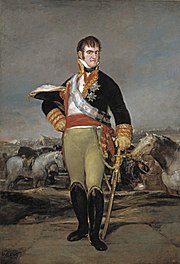 King Ferdinand VII
King Ferdinand VII
Napoleon saw his chance for a coup d’état and invited the king and his family to go to Bayonne in France. Hoping that the emperor would help him regain his throne, but fearful of imprisonment or worse, the king had little choice but to accept. Once there, Bonaparte refused to help him, and refused to recognise his son as king. Nearly all the Spanish royal family was now under house arrest in France, and Napoleon executed his master stroke of forcing them to cede the crown of Spain to his brother, Joseph Bonaparte. The Council of Castile, the central government of Spain, was now under the control of the emperor.
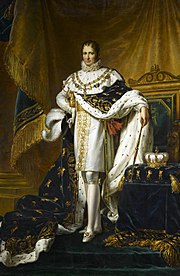 Joseph I of Spain.
Joseph I of Spain.
When the people realised they had been duped, they began to provoke and jeer at French forces in Spain. On 2 May 1808, the younger son of Charles IV, the Infante Francisco de Paula, who was the only remaining candidate for the throne, was sent to Bayonne. This was the spark that ignited the gunpowder.
Nobody knows how it started, but during the 2 May, the whole Spanish population of Madrid rose up and fought French soldiers in the streets. During the night, the French regained control of the capitol and the following day began to execute anybody who had fought against them. The Spanish administration collapsed, but the word spread throughout Spain to fight the French wherever they were found. Resistance fighters organised themselves into groups aided by the remains of the Spanish army, and a new kind of warfare was conceived. The Spanish word for war is guerra, and the diminutive is guerrilla, and these “little wars” with hit and run tactics began to sap the strength of the French forces. Provincial juntas (councils) were created and began to coordinate their actions.
Napoleon responded by organising French units into flying columns to subdue the major centres of resistance. One of them was sent to Andalusia in June 1808 with the intention of relieving a French naval squadron which was trapped by the Spanish in Cádiz harbour. The force of 20,000 men was led by General Dupont de l'Étang, who decided that it would be a good idea to plunder Córdoba on the way. After this highly profitable diversion, he withdrew with cartloads of treasure and sent for reinforcements from Madrid.
General Castaños was commanding the regrouped Spanish army in Andalucia and he and General von Reding, Governor of Málaga, joined with the junta of Seville to lead an army to attack Dupont’s forces who were spread out amongst villages along the Guadalquivir. Castaños attacked at Andújar whilst Reding crossed the river and took Mengibar and Bailén. Dupont’s army was cut in half, and he was surrounded. His troops made three desperate charges to break out, but they failed with the loss of 2,500 men. Dupont called for an armistice and was compelled to surrender. However, the other half of Dupont’s army was still intact outside the encirclement and Dupont astonished everybody by ordering them to surrender, too.
 del Prado.jpg)
The surrender of French forces at Bailén. Painting José Casado de Alisal : del Prado.
This was the first time that Bonaparte had suffered a defeat in open battle, and he was furious. All over Europe countries occupied by French forces realised that this invincible empire could be beaten. Joseph Bonaparte was forced to leave Madrid a month after the Battle of Bailén, and it was only the intervention of his brother, who briefly led the French army in Spain, that the French re-occupied the capitol in November. Napoleon had more ambitious plans, and was not about to be distracted by this rabble from the Spanish streets. As the Bonaparte brothers found out to their cost, the lowest Spanish farm labourer would take up arms to force their mighty army off Spanish soil, and this Spanish ulcer, as Napoleon later called it, was the beginning of a long ailment that would bring him down.
As far as I know, (and you can correct me if I am wrong) there is only one place in Spain where the fierce resistance of the ordinary people of Spain against French forces is remembered and celebrated. There are statues and monuments, but this is the only living recreation of French occupation.
On the morning of 22 April 1810, an exhausted rider arrived at the town hall of the little Andalusian pueblo of Algodonales bringing very bad news. One of Bonaparte’s flying columns had attacked the town of Montellano 30 kilometres away. Since the uprising in Madrid nearly two years earlier French troops had been brutal in enforcing their rule. Rape, beatings and murder were encouraged in order to subdue the Spanish.
A grim meeting was held in the village square, and 13 of the townsfolk led by Gaspar Tardío volunteered to ride to Montellano and help fight the French. They were joined by a force of 60 Spanish troops who had been garrisoned nearby and led by Francisco Salcedo. On the way, their ranks were swelled by volunteers from Puerto Serrano, a village half way to Montellano.
What they saw when they entered Montellano shocked them. The village had been bombarded by artillery and burned to the ground. The only survivors were the mayor, José Romero, and his family. They realised that there was nothing they could do for the town and returned to Algodonales to prepare their defences. Two weeks later, a division of between 6,000 and10,000 French troops led by General of Brigade, Jean-Pierre Maransin arrived at the outskirts of Algodonales. Mayor Juan Ximenez de la Barrerra led the townspeople of Algodonlaes against an overwhelmingly superior force of French troops. They had barricaded the streets and were prepared to stand and fight for their pueblo to the last man.
On the 1 May the first attack by the French was repelled with heavy French losses. Maransin called a parley and offered to spare the village if they surrendered. The villagers had seen what happened to Montellano and knew that the French would not keep their word; they decided to fight. On the 2 May, exactly two years after the uprising in Madrid, French artillery began to bombard the town. By evening, 73 houses had been destroyed and 237 of the villagers were dead and the French took the town. The survivors were brutalised and the women raped. The men and boys were imprisoned and the village was forced to pay 200,000 reals to have them released.
When the War of Independence was over, and the French were gone, Algodonales was granted autonomy from its regional junta, Zahara de la Sierra, and awarded the title of "Village among the Most Deserving in Spain".
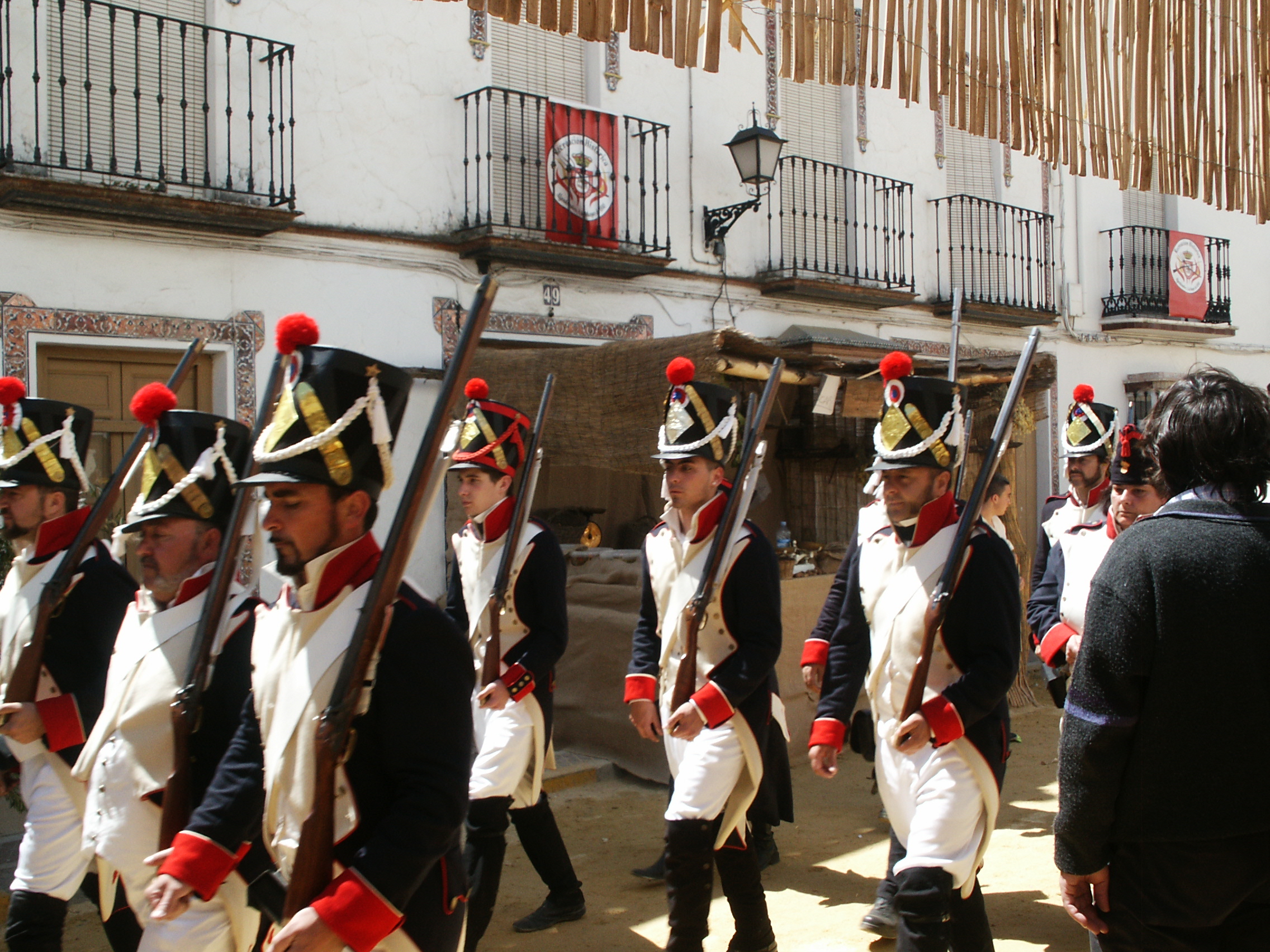
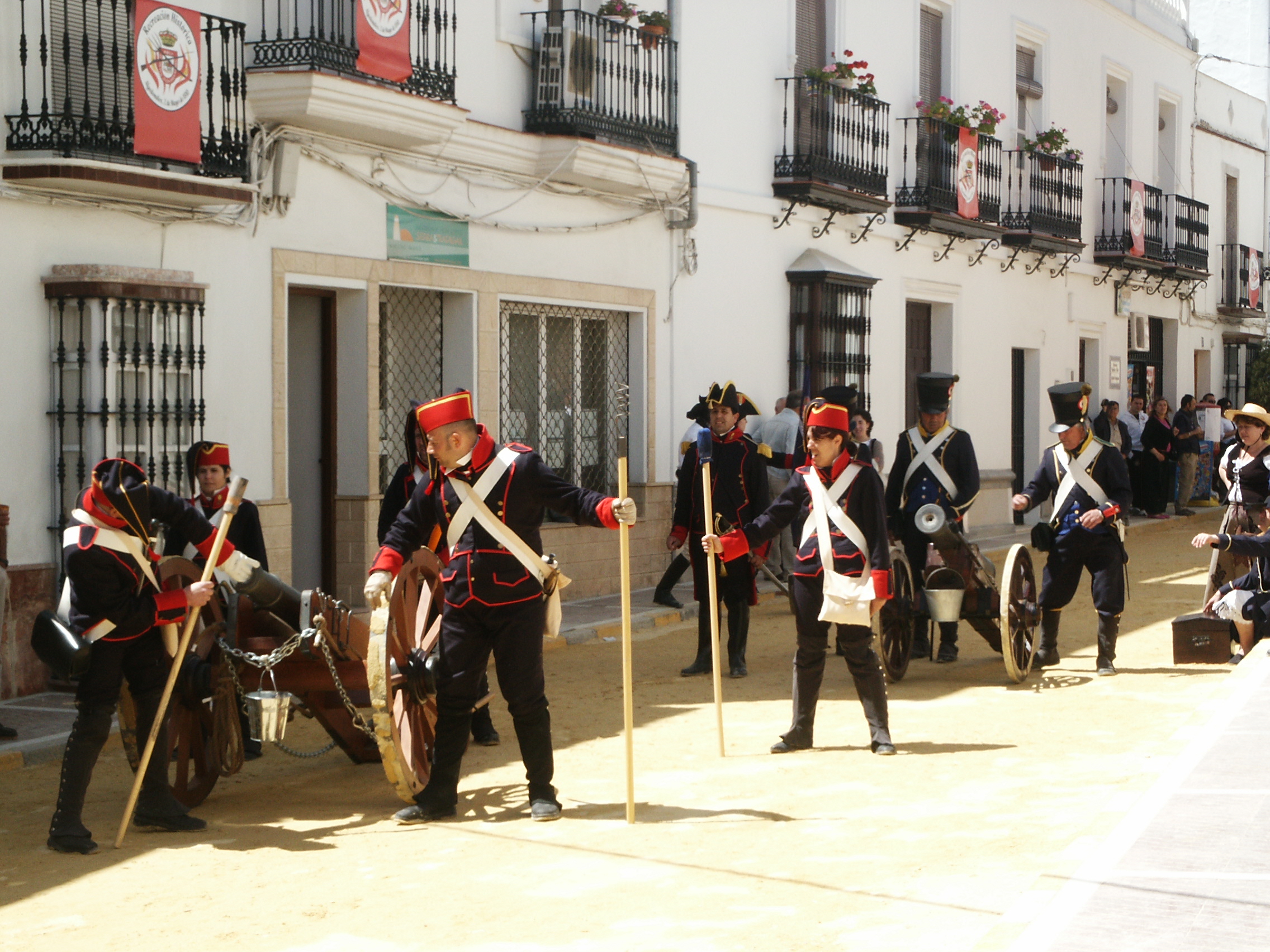
Photos: Alan Pearson
Each May, the village celebrates the battle with a re-enactment of the battle that involves all the townspeople with authentic cannon and muskets. When I lived in Spain I watched this enactment several times and can recommend it. They may not stage it this year, but don’t miss the 2022 battle.